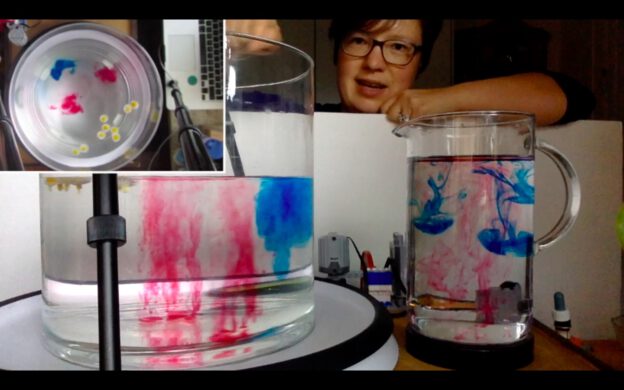This semester is turning out a little different from what we had hoped, but it has presented the opportunity to try our new things: Torge and his class join me in my kitchen! I log into their online class with two devices, one looking at the tank from the top, the other looking from the side. Students watch, discuss and tell me what parameters to modify.
Or that’s the idea. Sometimes it works better, sometimes technology is less cooperative. But in general, our experiences are quite positive, especially when we combine experiments that I present with even simpler experiments that the students can do at home, so we can all observe something right in front of us and discuss our observations.
One example where this worked really well were experiments on non-rotating vs rotating turbulence. In order to really appreciate the effects of rotation on turbulence, it’s really helpful to first closely observe what it looks like in the non-rotating case (even though it might be obvious to us, many people have never really observed this consciously before). And the non-rotating case is really easy to do at home! Students got super creative, using e.g. cranberry juice or really concentrated black tea as dye! And it’s so much more engaging to discuss experiments that you are doing yourself than that you are watching on a screen…

If you are curious, here is a video of what the experiments for rotating vs non-rotating turbulence look like. And here is an even larger collection of all the experiments that I’ve been able to do at home and that we will sooner or later incorporate in class. Check it out and tell us what you think!

Pingback: “Remotely controlled” kitchen oceanography | Teaching Ocean Science - Animal's Life